617 Search Results for tell me about it
May 5, 2015
by Carole Zangari -
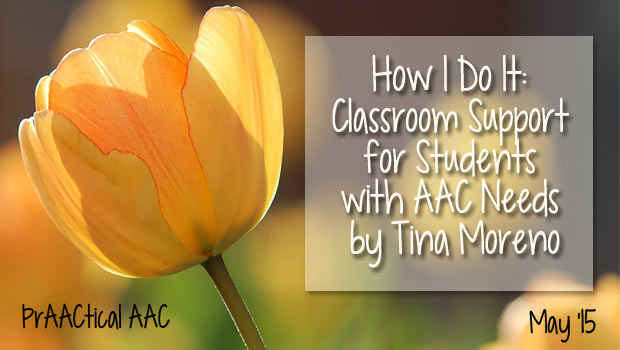
We are fortunate to have a return visit from Tina Moreno, who brings her experiences both as an SLP and also as a mom of a teenager who has used AAC for most of his life. In this post, Tina shares some of the strategies that she has used to support AAC students in their classrooms. If you are a school-based SLP, don’t miss Tina’s classroom observation form for gathering data on how AAC is being used in various activities and lessons. GIVE THEM FIVE As an SLP in the school setting, helping teachers support students in the classroom can be a big challenge. While we can see students making progress in our therapy sessions, it can be difficult to get the same results in the classroom. An important role of the SLP is to collaborate with teachers to help students generalize these skills in conversation with their peers and other... [Read More...]
April 23, 2015
by Carole Zangari -
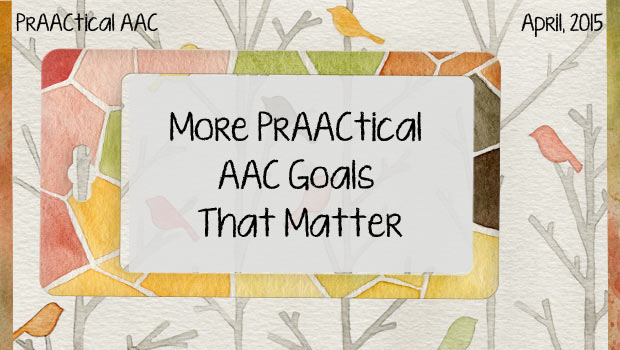
While we may play a variety of roles, a commonality among those of us on teams serving individuals with AAC needs is that we often struggle with developing goals that are meaningful. Let’s work together to develop a list of potential goals that we can reflect on as we work with our clients and their families on a plan for becoming more competent communicators. There are two sections in this post: Qualifiers (for information applying to all goals) and Goal Areas (for actual goals). This is not meant to be a comprehensive list but rather a starting point for a collaborative document. Please join the effort by adding goals in the comment area below or reaching out using our contact form. SECTION 1: QUALIFIERS Each goal can be prefaced with a description of the communicator’s AAC system or the elements of that system can be named. Terms used in this document... [Read More...]
April 20, 2015
by Carole Zangari -

Working with core words? Whether or not you are following along with our Year of Core Words or using some other approach, Earth Day is the perfect time to practice those reusable, recyclable words. Last week, we talked about using our April core words (2013 List: big, busy, do, drink, feel, he, in, make, out, some, tell, who) in literacy activities. Today, we’ll talk about using them in arts and crafts activities. Let’s create with core words! Choose your craft project. A quick Pinterest search yields lots of possibilities. Consider which words to focus on. Some of the April words (do, make, out, some) work well with any craft project. Review the project through the lens of your goal: Modeling and eliciting core words. Decide how you will implement it so that the focus is the core words, not the art itself. Make an activity schedule showing the steps for... [Read More...]
April 13, 2015
by Carole Zangari -

Core Words for the Month (2013 List): big, busy, do, drink, feel, he, in, make, out, some, tell, who By definition, core words are useful in any situation, with any topic and any communication partner. They are the perfect words for Earth Day because they are words that they we re-use and recycle. Even though it is a very minor holiday (at least in the US), most schools do a lot of thematic work around the topic, both because it ties in so beautifully with science education, but also because all kids seem to have a connection with and curiosity about the natural world. Before we knew better, SLPs would spend lots of time programming specific vocabulary into the learner’s AAC device. (I’m guilty as charged and can still remember trying to find symbols for things like trash compactor and pollution.) For learners who have good command of core vocabulary, we... [Read More...]
April 8, 2015
by Carole Zangari -
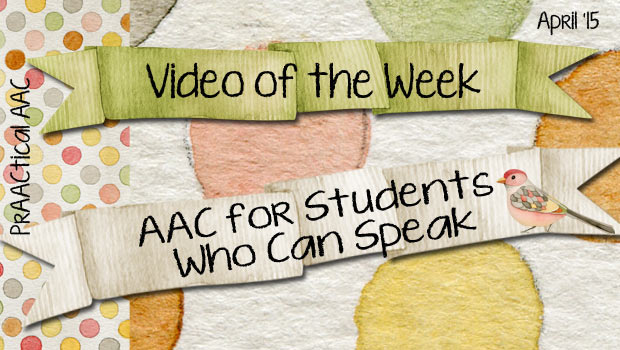
“But my student can speak. Why would we use AAC?” We often get this question from our fellow SLPs, particularly those who work with students who have autism. From the question alone, it seems like AAC is not needed, and would be a step backward for this particular student. But what happens when we dig a little deeper? The last time this question was posed to me, it was about Marcella, an 8 year old with ASD. As the conversation progressed, we learned more about Marcella’s communication profile. Independently, she uses 2-3 word sentences to ask for things she wants (e.g., “Want that popsicle.” “More Dora”) and single words to protest (“No!”). With prompting Marcella uses 1-2 words for greeting (e.g., “Hi Tony”), labelling (e.g., “Dora book”), answer questions, (e.g., “here,” “sunny”) and a few other social purposes. So, what’s the problem? For starters, Marcella is capable of more. In... [Read More...]
April 7, 2015
by Carole Zangari -
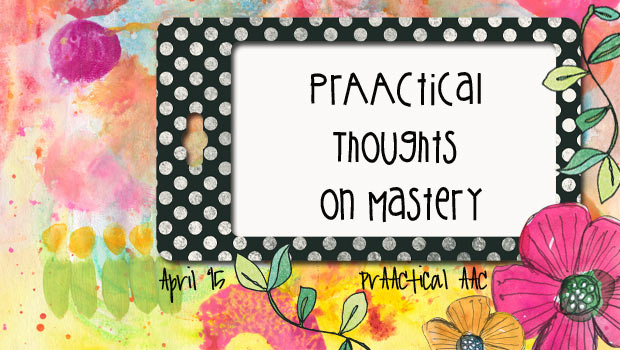
In many clinical training programs, new SLPs are taught to teach skills to mastery level, which generally means something like “80% over 3 consecutive sessions.” For our clients who are developing communication skills using AAC, though, this isn’t always the best approach. Here’s why. It doesn’t always make sense. Having a single standard for mastery is useful as a clinical management tool, but often doesn’t make sense in individual situations. Consider the skill itself. Would you be comfortable with your clients being 80% accurate when they: Cross the street? (Of course not.They need to be 1,000% accurate with that.) Ask for things? (Probably. Although Johnny has many days where he’s pretty happy with everything and doesn’t really have clear preferences or desires that we can ascertain. It would be nice to respect that. Not to mention the fact that he might want something that we haven’t offered him.) Make a... [Read More...]
March 31, 2015
by Carole Zangari -
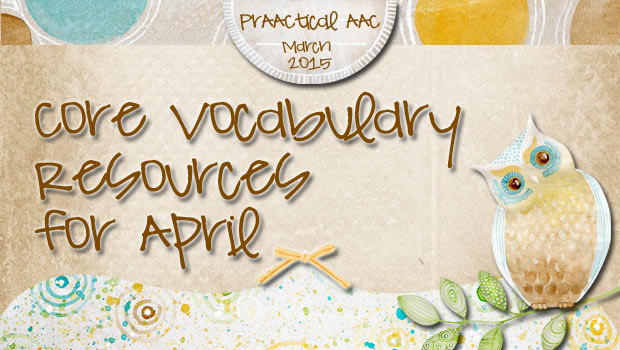
We are leaving March behind and getting ready to focus on a new set of core vocabulary words for April. Whether you are following along with the 2013 Year of Core (12 words/month) or the 2014 A(nother) Year of Core: (16 words/month; Different than the previous year’s core words), or just getting started, here are some helpful resources. Our words for this month are listed below. 2013 List: big, busy, do, drink, feel, he, in, make, out, some, tell, who 2014 List: blue, brother, close, family, head, last, long, no, old, right, scared, soft, thing, top, wash, whole You can download the blank template to add in your own symbols for each of the words or check out the ones made for a variety of AAC symbols. Templates for you to plug in your own symbols: 2013 words, 2014 words Minspeak/Unity version: 2013 PCS versions: 2013; 2014 Symbol Stix version: 2013... [Read More...]
March 30, 2015
by Carole Zangari -
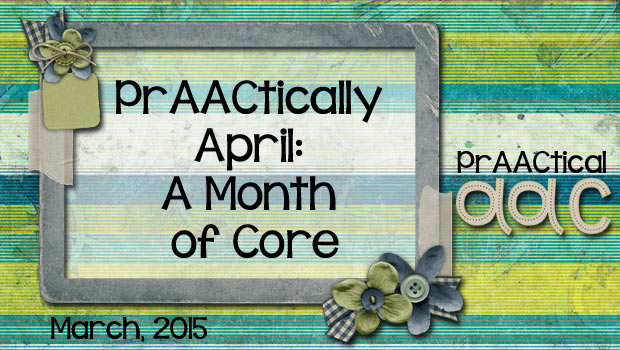
April is right around the corner, making this the perfect time to prepare some materials for practicing a new set of core vocabulary words. Rachael Langley is back to share some fun ideas for easy things to do to put that core vocabulary to work. She’s made two calendars, one with a focus word for each week and another one that covers many of the words in the April Year of Core Vocabulary list. These are great tools to print and share with classrooms or families. Click on the image to download the calendars or visit the Downloads sections of the eToolBox. Thanks for these great resources, Rachael!! Rachael has been working in the public schools as a speech-language pathologist for over 12 years. Currently working as an AAC Specialist in Mid-Michigan, Rachael tells us that she strives to spread the message about the importance of AAC and unlocking the communication... [Read More...]
March 17, 2015
by Carole Zangari -
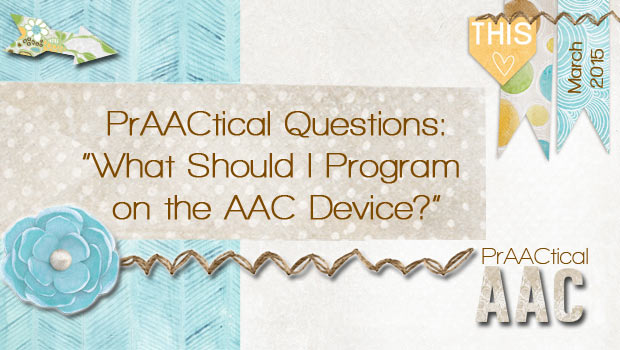
“My client has a new SGD and will begin bringing it to school. What words should I program on it?” We are so fortunate to be practicing at a time when the high tech SGDs and robust AAC apps come pre-loaded with lots of vocabulary. Still, when you sit down to prepare the device for an actual client, it can be hard to determine what needs to be there right away and what can wait. You’ll find lots of forms and checklists floating around, some for children and some for adults. There are lots of right ways to do this. In making these decisions, I typically run through a mental checklist of a few categories, thinking both about single words and longer messages. Single Words Core Vocabulary: In most cases, we’ve selected an AAC tool that has ample core words to choose from. Use what you know about normal language development... [Read More...]
March 16, 2015
by Carole Zangari -
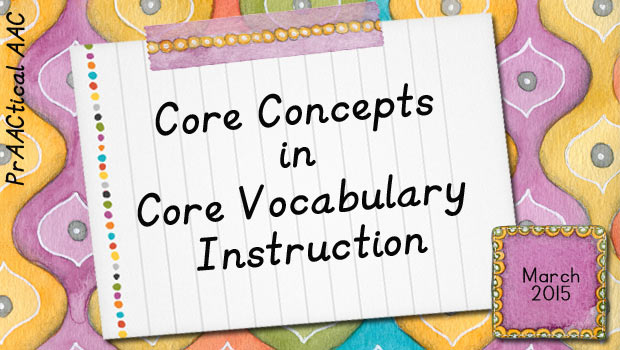
We’ve been talking about implementing A Year of Core Words and A(nother) Year of Core Words for our March words. If you are new to the idea, it involves highlighting a different set of set of 12-16 core words each month to help our AAC learners get progressively more familiar with their vocabulary options. Today, we’re linking to some posts with ideas for what to do with the core words for each month. Laying the Foundation Give learners access to core vocabulary in their communication books, SGDs, and/or AAC apps. Prepare the core vocabulary materials for the month. If you haven’t started, don’t sweat it. Just download, print, and give it a go. “A year from now, you will wish you had started today” (K. Lamb). We are ALL a work in progress. Use the core words in an AAC system when you speak. Whether we call it aided language... [Read More...]









